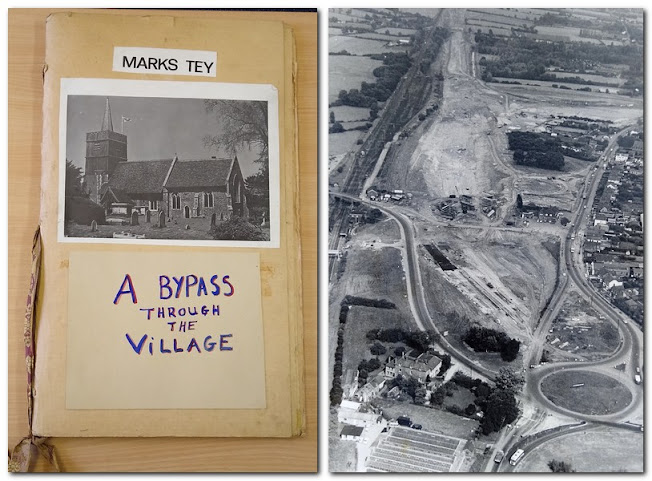In this technical world where so much recording is done electronically, it is easy to overlook
how paper documents hold information. While some historical records are held in archives, most paper sources are disposed of quite quickly. An expression “Yesterday’s
news - are tomorrow’s chip paper”, may in time become confusing to future
generations. Many younger people may have never
eaten fish and chips wrapped in newsprint ,or even read news on paper. Old newspapers especially local ones, contain an important part of the historical
record, few are kept, or even more rarely held in the form of a scrapbook.
Circulation of newspapers has declined significantly, to
pick out history from scrapbooks will become increasing rare. However, one
such example has come to my attention, following a conversation with Rod Terry our volunteer electrician. He kindly loaned me for a while his family heirloom, a
collection of cuttings, which are reproduced in photographs here.
These were compiled by his mother, Mrs Terry’s scrapbook
records both stories about the Marks Tey to Sudbury
railway and the newly built Marks Tey and Stanway bypass (A12 road). These date from the1969 to 1971 period. On the right a view in
the vicinity of Marks Tey station, the old station building was still there and
major earthworks in progress.
These reports show changing times in local transport, a headline
“Railway Line Reprieved” dated from 1969 reports the branch line should be retained
for five years ( to about 1975). Foresight is seen as it suggests that passenger traffic might grow with the expansion of Sudbury
as a town, partly because of a Town development scheme was in progress. This was also known as a London Overspill scheme
to give is unloved unofficial name, promoted by the Greater London Council.
This and others reports in the museum’s newspaper collection, shows the debate at the time to retain the Sudbury
to Marks Tey line.
The London “Overspill scheme” is a topic worthy of
revisiting in another Chappel News, it affected towns such as Haverhill, Bury St Edmunds, Braintree, Witham, Thetford, Huntingdon, and as designated new towns Basildon and Harlow as well.
Within the scrapbook was a genuinely rare find, loosely contained within it was government letter from June 1972 - which talks of a limited financial subsidy so delaying a potential of closure of the Marks Tey to Sudbury branch line. Treats of closure only really faded the 1973 an oil and petrol crisis in 1973 when it was thought more people would have to use trains as a result!
A final academic study suggesting conversion of railways to busways report
in 1976, actually studied the line and will feature in a separate article in future.(The better use of railways/ University of Reading Geographical papers p51-56.)
Of course all this uncertainty was the catalyst to the
formation of the former SVRPS (Stour Valley Railway Preservation Society), on which the whole museum site has
subsequently been built, the January 11th 1971 article below suggests running trains between Chappel and Bures.
(Photo 2)
Political uncertainty is highlighted in this press cuttings
and Government announcement (Photo 3)
Photo 5: Colchester North where a giant steel girder is
being driven away from the station destined for the Motts Bridge near the Spring
Lane intersection.
The occasional mishaps can occur in construction; a lorry
stuck under the bridge would be a social media posting today.
Photo 6: Aerial views of the road when completed
At the top the Spring
Lane intersection looking South West it was opened for traffic on February 3rd
1971, ( An extension of the Colchester North bypass taking A12 away from the town was built later).
Below that, Tollgate
intersection on the A12 seen looking south –east from Eight Ash Green.
A smaller roundabout
at the end of Essex Yeomanry Way in the far distance. GEML railway passing left to right
in the middle. A view today would contain
a large Sainsburys superstore and associated new housing developments towards
the top right
To conclude this story, my thoughts return to the idea of a
scrapbook, maybe as paper is now only one of
medium of choice of choice for news, is a blog a
modern equivalent? While social media
can capture thoughts at a point on time- it is not edited or presented to tell a story.





